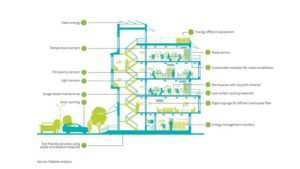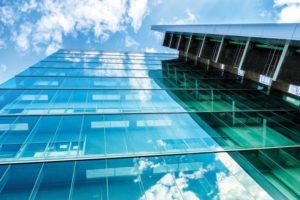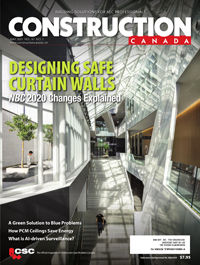Designing and delivering a greener future with sustainable buildings

Four ways to reduce emissions
Other possible tailwinds for sustainable engineering and construction include innovative materials, digital technology, regulation, and policy incentives.
New emission-reducing materials include advanced concrete, recycled glass and plastic, algae-based limestone, low-carbon bricks, synthetic siding, wood treatments, and smart glass.
Digital technologies such as Internet of Things (IoT), sensors, connected devices, advanced analytics, generative design, and simulation software can drive down emissions and help developers conserve resources. Advanced controls, systems integration, data analytics, and energy optimization can actively reduce energy demand and consumption.
In particular, building information modelling (BIM) software can be valuable technology. It allows developers and operators to conserve energy and resources while shortening project timelines.13 Global BIM standards will likely drive growth in the market as they become more consolidated and widely adopted. More than half of construction executives who responded to Deloitte’s survey agreed they would likely invest in digital technologies such as artificial intelligence (AI), digital twins, and BIM in the next year.14
On a broader scale, government incentives have supported substantial progress toward a net-zero built environment. Global investment in the energy efficiency of buildings reached $180 billion in 2020, up from $129 billion in 2015, driven primarily by funding from European countries.15

Meanwhile, LEED is an important regulatory lever, serving as a significant driving force behind the increased development of green buildings worldwide.16 Buildings can receive LEED credits for optimizing energy performance by analyzing efficiency metrics and focusing on load reduction and HVAC-related strategies during the design process.17
Similarly, construction projects can earn LEED credits for building operations and maintenance by installing new or using pre-existing energy meters or submeters that can be combined to produce data at the building level showing the overall energy usage of the building.18
So, what might a building look like when all the elements of a sustainable building strategy fall into place? Figure 1 is an example of a sustainable building that employs innovative materials and advanced digital technologies.







